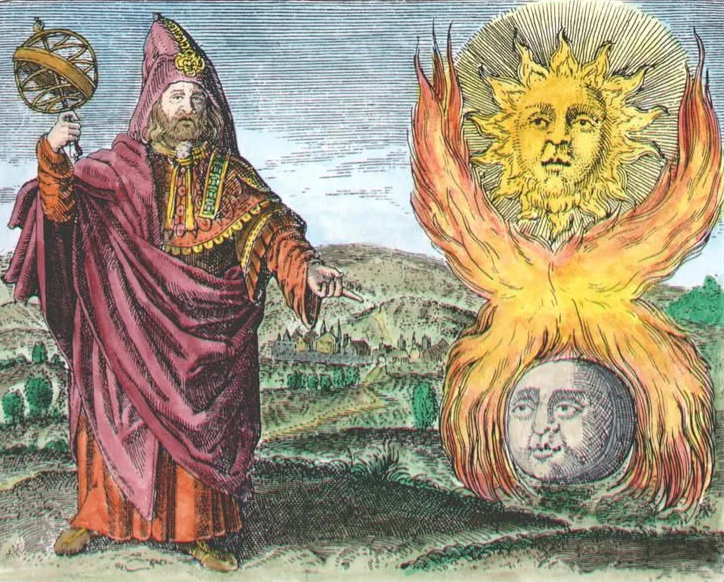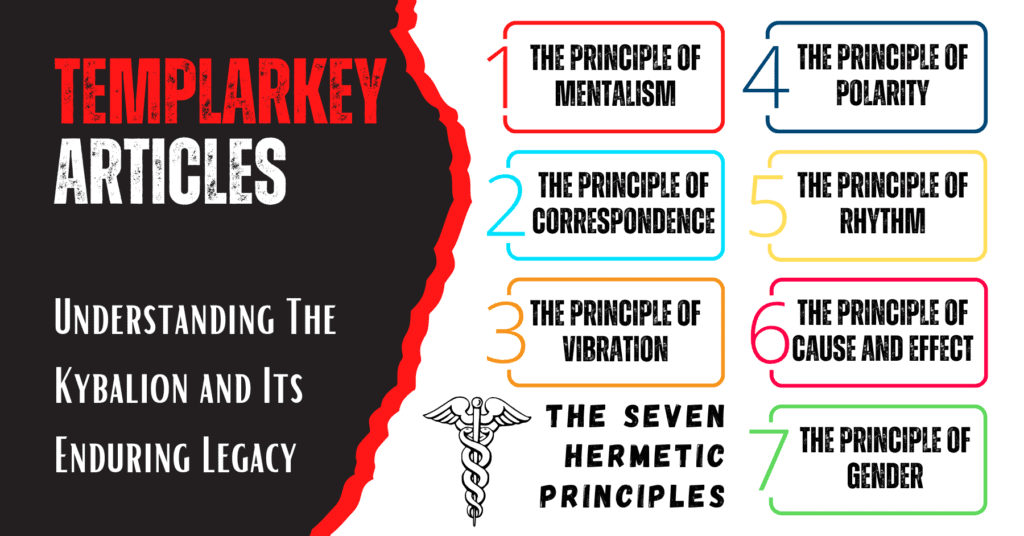Unlocking the Mysteries of Hermetic Philosophy: Understanding The Kybalion and Its Enduring Legacy
Hermetic philosophy, steeped in ancient mysticism and metaphysical inquiry, has intrigued seekers of wisdom for centuries. At the heart of this esoteric tradition lies The Kybalion, a text that distils ancient Hermetic teachings into a digestible and timeless guide for modern readers. By exploring its historical origins, the simplified presentation of ancient wisdom, the seven Hermetic principles, and its influence on contemporary spiritual movements, we can uncover why understanding The Kybalion remains a cornerstone of spiritual exploration.
Historical Origins of Hermetic Philosophy in The Kybalion
Hermetic philosophy traces its roots to the mythical figure Hermes Trismegistus, often associated with Thoth, the Egyptian god of wisdom, and Mercury, the Roman deity of communication. These teachings, believed to emerge from ancient Egypt and Hellenistic Greece, delve into universal truths about the cosmos, human existence, and the interplay between the two. Hermetic texts such as the Corpus Hermeticum and the Emerald Tablet laid the foundation for centuries of metaphysical thought. Therefore, understanding The Kybalion is straightforward and easy as opposed to the more difficult path of studying the Corpus Hermeticum.

Published in 1908, The Kybalion emerged during a time of growing interest in occultism and spiritual self-development. Credited to the pseudonymous “Three Initiates,” the text synthesises ancient Hermetic wisdom, aiming to make it accessible to the early 20th-century seeker. It became a bridge between the past and present, ensuring the preservation of esoteric knowledge in a rapidly changing world.
How The Kybalion Simplifies Ancient Hermetic Teachings
One of The Kybalion’s enduring strengths is its ability to distil complex metaphysical concepts into relatable insights. While ancient Hermetic texts are dense and often veiled in allegory, The Kybalion takes a practical approach, presenting its teachings as tools for understanding and mastering the human experience. This accessibility has made Hermetic philosophy relevant to those seeking personal growth, spiritual alignment, or an understanding of universal laws. However, understanding The Kybalion may not be the answer to understanding ancient Hermetic philosophy.

Rather than requiring fluency in ancient languages or deep esoteric training, The Kybalion offers its wisdom through concise explanations of principles that govern reality. This simplicity has broadened the reach of Hermetic philosophy, introducing it to a global audience eager to uncover timeless truths.
Seven Hermetic Principles in The Kybalion: A Deeper Look
At the heart of The Kybalion lie the Seven Hermetic Principles, each offering a profound insight into the workings of the universe and the mind:
1. The Principle of Mentalism: “All is Mind; the Universe is Mental.” This principle posits that reality originates in thought, emphasising the creative power of the mind.
2. The Principle of Correspondence: “As above, so below; as below, so above.” It highlights the interconnectedness of all things, revealing patterns mirrored across different planes of existence.
3. The Principle of Vibration: “Nothing rests; everything moves; everything vibrates.” This principle suggests that all matter and energy exist in a state of perpetual motion.
4. The Principle of Polarity: “Everything is dual; everything has poles.” Opposites are seen as varying degrees of the same essence, teaching balance and transformation.
5. The Principle of Rhythm: “Everything flows, out and in.” The cyclical nature of life and the universe is explained through rhythms and patterns of change.
6. The Principle of Cause and Effect: “Every Cause has its Effect; every Effect has its Cause.” This law emphasises the chain of causation governing events.
7. The Principle of Gender: “Gender is in everything.” Beyond biological definitions, this principle represents the dual forces of creation present in all things.
Each principle offers a lens through which to view the world, encouraging self-mastery and alignment with universal laws.
The Influence of The Kybalion on Spiritual Movements
Since its publication, The Kybalion has left an indelible mark on modern spiritual movements. The New Thought movement, which emerged in the late 19th century, echoes many of its teachings, particularly those related to the power of thought and manifestation.
The Kybalion also resonates with contemporary practices such as the Law of Attraction, mindfulness, and holistic spirituality, emphasizing the integration of mental, emotional, and physical well-being.
Furthermore, its emphasis on universal principles has made it a foundational text for practitioners of various spiritual paths, including Hermeticism, occult traditions, and metaphysical studies. Its appeal lies in its ability to transcend religious boundaries, providing a universal framework for understanding the mysteries of existence.
Understanding The Kybalion: A Timeless Guide for the Modern Seeker
The Kybalion continues to captivate readers with its elegant synthesis of ancient wisdom and practical insight. By offering a clear and concise roadmap to Hermetic philosophy, it enables seekers to explore universal truths and their application to daily life. From understanding the interplay of mind and matter to embracing the cycles of change, The Kybalion invites readers to harmonise with the greater cosmos.
Whether one seeks personal enlightenment, spiritual growth, or a deeper understanding of life’s mysteries, The Kybalion stands as a timeless guide. It not only preserves the essence of Hermetic philosophy but also ensures its relevance in an ever-evolving world. For more about the author of The Kybalion, read our in-depth article.
Comparison: The Kybalion vs. Corpus Hermeticum
| Aspect | The Kybalion | Corpus Hermeticum |
|---|---|---|
| Authorship | Attributed to “Three Initiates” (anonymous authors, 1908). Likely written to modernize Hermetic principles. | Authored by various ancient philosophers attributed to Hermes Trismegistus, dating to 2nd-3rd centuries CE. |
| Historical Context | A modern interpretation tailored for a Western occult and New Thought audience in the early 20th century. | Ancient philosophical and spiritual writings deeply embedded in Hellenistic and Egyptian mystical traditions. |
| Content | Focuses on seven simplified Hermetic principles presented as tools for practical spirituality. | A collection of dialogues and teachings on divine knowledge, cosmology, and the soul’s journey to enlightenment. |
| Philosophical Depth | Relatively simplified, emphasizing practicality and modern spiritual relevance. | Rich in allegory, metaphysics, and profound philosophical inquiry into existence and the divine. |
| Language and Style | Accessible and easy-to-read language with a modern flair. | Dense, poetic, and symbolic, requiring contemplation and deeper study. |
| Influence | Popular among occultists, New Thought practitioners, and modern spiritual movements. | Foundational to Hermetic philosophy, influencing Western esotericism, Renaissance thought, and early Christian mysticism. |
| Core Approach | Offers practical guidance for self-development through mental mastery and universal principles. | Explores the metaphysical nature of reality, the divine, and human purpose through theological and philosophical discussions. |
| Accessibility | Designed for modern seekers with little background in Hermeticism. | Requires familiarity with ancient texts, metaphysics, and symbolic interpretation. |
Ancient Hermetic texts provide an authentic and profound exploration of esoteric wisdom, making them indispensable for those seeking the true depth of Hermetic philosophy. By contrast, The Kybalion simplifies these teachings, offering an accessible introduction while lacking the full richness of the original works.
Reasons to Choose the Corpus Hermeticum:
- Authenticity and Depth: The Corpus Hermeticum is the foundation of Hermetic philosophy, providing unfiltered insights into ancient metaphysical and cosmological beliefs.
- Philosophical Richness: Its dialogues offer profound reflections on the divine, the cosmos, and human purpose, fostering a deeper intellectual and spiritual engagement.
- Historical Context: Reading the Corpus Hermeticum connects the reader to the cultural and historical currents that shaped Western esotericism and philosophy.
- Avoiding Simplification: Unlike understanding The Kybalion, which distils Hermetic thought into simplified principles, the Corpus Hermeticum challenges readers to engage with the nuances of Hermetic teachings, promoting intellectual growth.
Understanding The Kybalion is easy, we always recommend to push your limits of understanding. Dive into the wisdom of the ancients and explore the enduring legacy of The Corpus Hermeticum instead. Let its timeless principles illuminate your path toward self-discovery and universal understanding.
